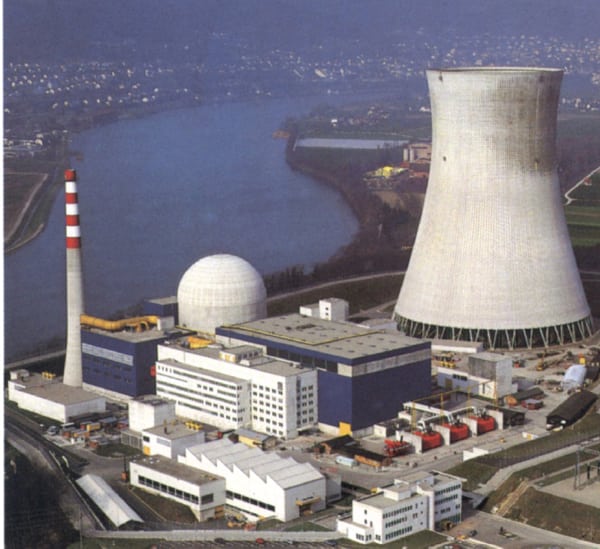Switzerland Contemplates Filling Future Nuclear Energy Gap
A model of Switzerland’s energy future to 2050 that abides with the country’s post-Fukushima decision not to build any new nuclear power plants suggests the phase-out could cost nearly $33 billion. But that number is less than expected, and the closure of the country’s five nuclear reactors—40% of its total generation—by 2034 “is feasible and its economic impact will be limited,” said Switzerland’s Department of the Environment, Transport, Energy, and Communications (DETEC).
The agency created the model to be used in formulating the country’s new energy policy through 2050. In its analysis, DETEC also found that the phase-out would not impact overall final energy consumption and electricity before 2020, but that total electricity consumption must decrease by 21 TWh between now and 2050. Switzerland would also need to increase generation from renewable sources as well as build new combined heat and power facilities and gas-fired combined cycle plants. Switzerland will still be able to achieve its European Union–mandated target cuts for carbon dioxide by 2020 if it increases its carbon tax. DETEC’s conclusions will be incorporated into a bill later this year.
About 41% of Switzerland’s overall power production in 2011 (a total of 62.9 billion kWh) came from its nuclear plants. Hydropower plants contributed 53.7%, followed by conventional thermal and other power plants (5.6%). The first reactor that could be taken offline would be the Beznau 1 in 2019, followed by Beznau 2 in 2021. The remaining three—the 372-MW Mühleberg, 985-MW Gösgen, and 1,190-MW Leibstadt—would be shuttered between 2029 and 2034.
Analysts note that DETEC’s estimates are much lower than expected. Think tank Schweizerische Energie-Stiftung, for example, suggested that replacing the reactors could cost at least $105 billion. Other observers predict that related increases in electricity prices will yield overall drops in the country’s gross domestic product.
 |
| 3. Facing closure. Switzerland’s decision to phase out nuclear power by 2050 would mean the 1984-built Leibstadt nuclear power station could be shuttered by 2034. Alpiq’s 1,190-MW plant in Leibstadt produces a sixth of Switzerland’s power. Courtesy: Alpiq |
Cost estimates for phasing out the nuclear plants that make up about a quarter of Germany’s power generation have been similarly elusive. RWE put the number at around €300 billion, and state-owned investment bank KfW has said it could cost about €250 billion by 2020. Siemens in January estimated that the phase-out could cost between €1.4 trillion and €1.7 trillion (US$1.8 trillion and $2.2 trillion) by 2030.
While Germany’s big utilities financially hemorrhage from Germany’s decision after the Fukushima crisis in Japan to phase out all its nuclear power plants within a decade, a heated public debate has been incited about how to best fill the nuclear generation gap. In early May, leading energy executives from E.ON, RWE, and Siemens, as well as power network operators and trade unions, told Chancellor Angela Merkel that the accelerated nuclear exit and proposed reliance on renewables would create a 10-GW power gap.
Industry, which has criticized the German government for subsidizing renewables instead of funding infrastructure, has also called for more incentives to invest in flexible gas-fired power plants.
—Sonal Patel is POWER’s senior writer.